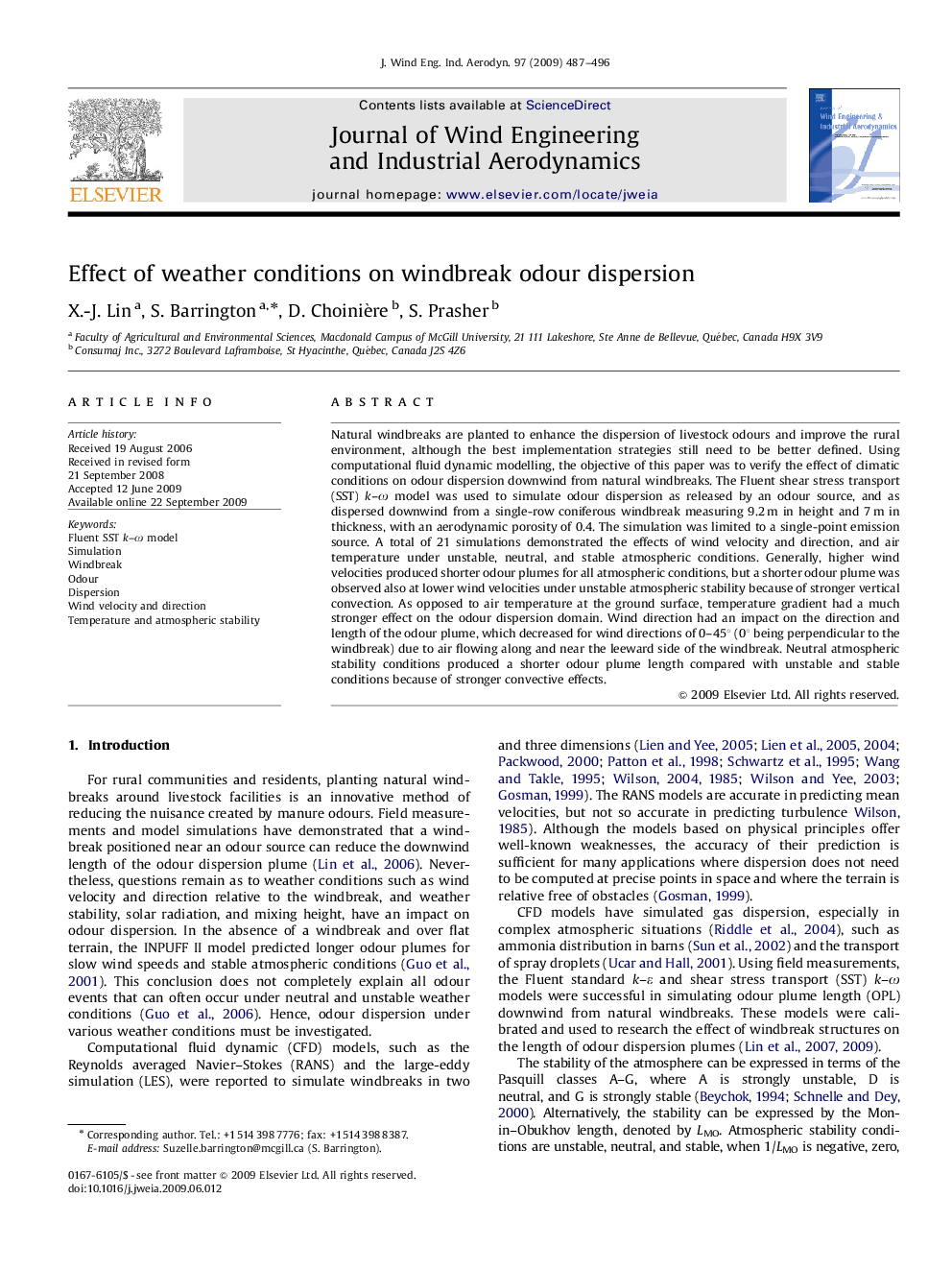| Article ID | Journal | Published Year | Pages | File Type |
|---|---|---|---|---|
| 292606 | Journal of Wind Engineering and Industrial Aerodynamics | 2009 | 10 Pages |
Natural windbreaks are planted to enhance the dispersion of livestock odours and improve the rural environment, although the best implementation strategies still need to be better defined. Using computational fluid dynamic modelling, the objective of this paper was to verify the effect of climatic conditions on odour dispersion downwind from natural windbreaks. The Fluent shear stress transport (SST) k–ω model was used to simulate odour dispersion as released by an odour source, and as dispersed downwind from a single-row coniferous windbreak measuring 9.2 m in height and 7 m in thickness, with an aerodynamic porosity of 0.4. The simulation was limited to a single-point emission source. A total of 21 simulations demonstrated the effects of wind velocity and direction, and air temperature under unstable, neutral, and stable atmospheric conditions. Generally, higher wind velocities produced shorter odour plumes for all atmospheric conditions, but a shorter odour plume was observed also at lower wind velocities under unstable atmospheric stability because of stronger vertical convection. As opposed to air temperature at the ground surface, temperature gradient had a much stronger effect on the odour dispersion domain. Wind direction had an impact on the direction and length of the odour plume, which decreased for wind directions of 0–45° (0° being perpendicular to the windbreak) due to air flowing along and near the leeward side of the windbreak. Neutral atmospheric stability conditions produced a shorter odour plume length compared with unstable and stable conditions because of stronger convective effects.
